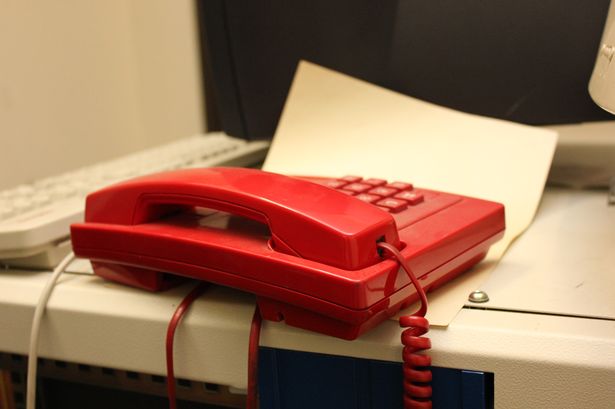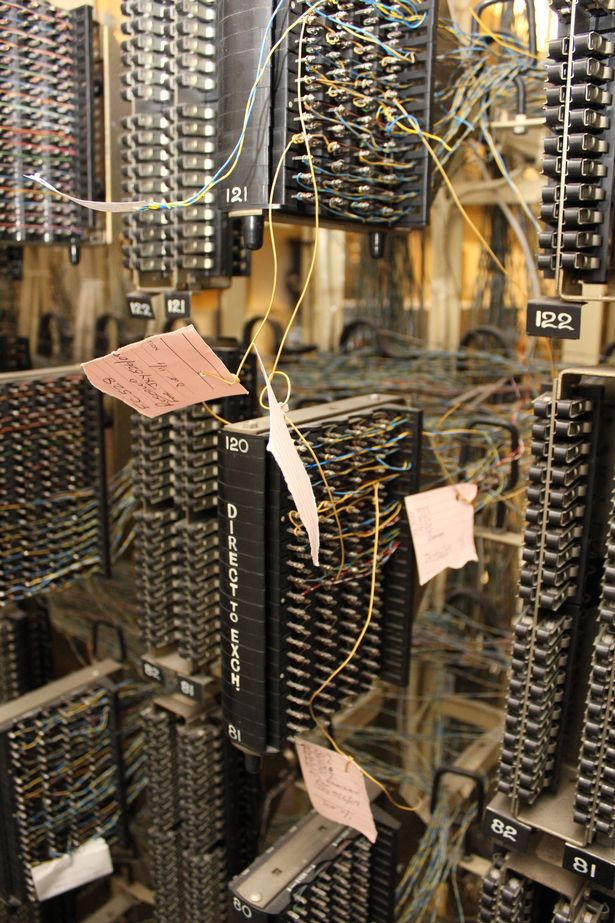A new project will spell the end of the historic site. The panic phone – a red telephone once found in a Cold War bunker in Oldham.
The panic phone – a red telephone once found in a Cold War bunker in Oldham.
It’s 70s Britain. The Cold War has been raging across the globe for decades – manifesting in lethal proxy wars, nuclear bomb threats and fierce espionage missions all across the geopolitical map.
Oldham has just opened its brand new town hall and Civic Centre – an imposing, concrete-clad Modernist building presiding at the top of the hill on West Street. Its iconic 16-storey tower is a statement, visible for miles across the newly-formed Greater Manchester region.
And for all it tries to draw attention to itself – the building also harbours a secret. One built to protect the borough’s decision makers, power-wielders and key workers in the case of catastrophe: a nuclear bunker, buried beneath the council’s offices.
Decades later, that bunker still exists – for now. Under new plans, that could all be about to change.
 A seat and desk with old telephones once situated in Oldham’s very own nuclear bunker. (Image: Oldham Council)
A seat and desk with old telephones once situated in Oldham’s very own nuclear bunker. (Image: Oldham Council)
The existence of the secret basement below the town hall was first revealed to the public by the M.E.N. in 2015 – long after it ceased being considered a ‘Cold War Bunker’ and had instead been turned into the official dumping ground for old council files and furniture.
For years, it still exhibited signs of a bygone era characterised by fear and conflict.
Archive images show boxes of binary code tape, which would have been used to send messages to the government. An iconic red telephone and an old exchange system show how the post-apocalypse survivors would have stayed in touch with the outside world.
 Jars full of spare fuses and electrical parts on a work bench. (Image: Oldham Council)
Jars full of spare fuses and electrical parts on a work bench. (Image: Oldham Council)
And lines of spare fuses and electronics on an old-fashioned work bench show that the nuclear preppers were prepared for all conceivable technological snags.
The haunting pictures hint at the level of anxiety and panic gripping the world between 1947-1991, when tensions between global superpowers repeatedly approached breaking point.
As a military ally to the US, Britain was embroiled in the conflict. And Manchester was considered a potential target should a nuclear war kick off in earnest – with radioactive fallout capable of travelling miles from the explosion point.
 Binary Code tape used to communicate with government. (Image: Oldham Council)
Binary Code tape used to communicate with government. (Image: Oldham Council)
During this time, thousands of underground complexes were reportedly constructed across the UK to keep VIPs safe in case of a nuclear attack or radioactive fall-out. Oldham’s Civic bunker was one of them, secretly opened in 1977.
Only a select few people would have gained entry to the Oldham bunker in the event of a crisis: senior councillors and officers, police chiefs, engineers, doctors and communications experts. Thankfully, it never had to be used.
And now, with big plans in the pipeline to change the face of Oldham forever, it may be the end of the road entirely for this Oldham slice of global history.
 The bunker’s heavy-duty Halon-powered fire extinguishing system. (Image: Oldham Council)
The bunker’s heavy-duty Halon-powered fire extinguishing system. (Image: Oldham Council)
The bunker has already been completely emptied out with objects of note placed in Oldham’s Local History Archive, which is due to move into the new venue next to The Spindles later this year.
That’s because a plan is underway to demolish the entire Civic Centre – with the exception of the iconic tower – to make way for almost a thousand homes in six new apartment blocks. The demolition and part of the construction was approved by the town hall earlier this month – in rooms that will no longer exist once the works are carried out.
In a heritage assessment submitted as part of the application, historic buildings experts Donald Insall Associates declared: “Whilst the underground bunker has some very low local historic interest, linked to the site’s origins during the Cold War period, it retains very little evidence of any such intended use or character, giving a low significance overall.”
 (Image: Oldham Council)
(Image: Oldham Council)
The project, it is hoped, will ring in a new era for Oldham borough – but it will spell the end of the Cold War bunker and its secretive history.
